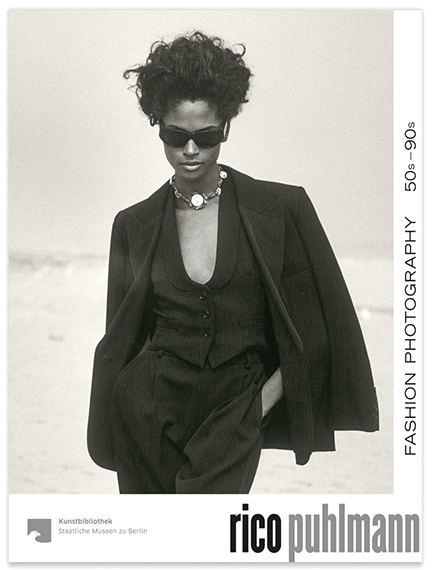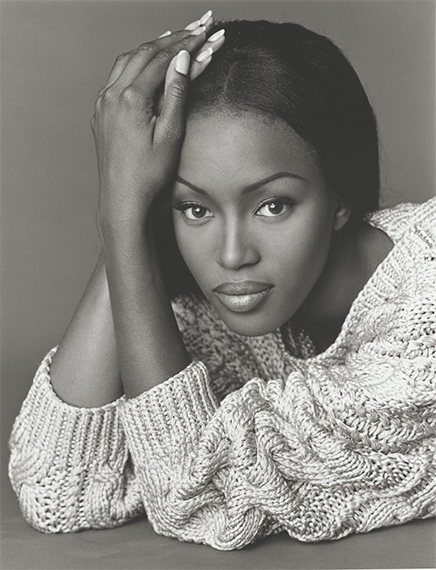
Iman Abdulmajid with Mary McFadden’s gold dress with cords, 1977
Color transparency
24 x 36 mm
(published in "Gold is News", Fashions of The Times, August 28, 1977)
© Rico Puhlmann Archive
Rico Puhlmann »
Fashion Photography 50s–90s
Exhibition: 27 Jun 2025 – 15 Feb 2026
Tue 16 Dec
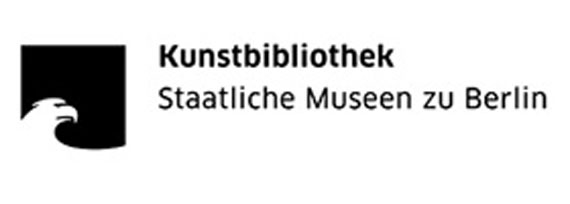
Museum für Fotografie
Jebensstr. 2
10623 Berlin
+49 (0)30-266424242
mf@smb.spk-berlin.de
www.smb.museum/mf
Tue-Sun 11-19, Thu 11-20
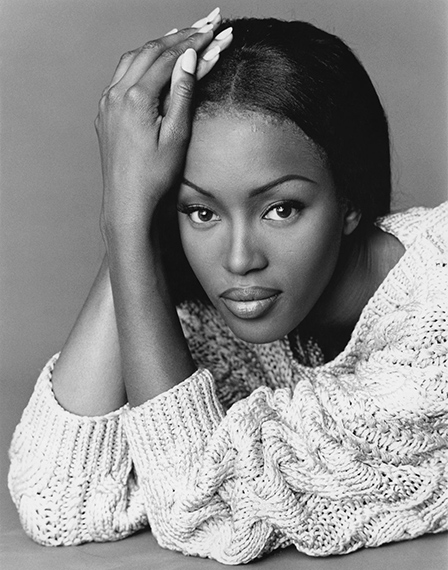
(in oversized beige silk cabled sweater by Michael Kors), 1992,
Silver gelatin paper, 50,5 x 40,6 cm,
© Rico Puhlmann Archive
(published in "10 Most Beautiful Women", Harper’s Bazaar (USA), no. 3366, June 1992)
Rico Puhlmann
"Fashion Photography 50s–90s"
Exhibition: 27 June 2025 – 15 February 2026
A special exhibition of the the Kunstbibliothek – Staatliche Museen zu Berlin
Rico Puhlmann (1934‒1996) was a leading international fashion photographer of his generation whose influence shaped fashion photography over the last four decades of the 20th century. The exhibition pays tribute to Puhlmann’s career, particularly his work for fashion magazines from the 1950s to the 1990s. It reviews diverse aspects of the history of fashion, photography, the press, and culture.
The exhibition offers comprehensive insights into Puhlmann’s drawn and photographic oeuvre, which he created over a 40-year period, first as an illustrator and then as a fashion photographer working for important magazines, including Brigitte, petra, and Constanze, as well as internationally for Vogue, Harper’s Bazaar, Glamour, and GQ. The most sought-after photo models of the time posed for his camera: Gloria Friedrich and Gitta Schilling, Cheryl Tiegs and Jerry Hall, Cindy Crawford and Naomi Campbell. Puhlmann’s photos appeared on countless magazine covers and filled several consecutive double-page spreads on glossy paper.
The majority of the exhibits originate from Rico Puhlmann’s archive of works, which is administered by his brother and sister-in-law, Klaus and Anne Puhlmann. They have generously made works available to the exhibition.
Berliner Chic in the Postwar Period
Puhlmann began his career as a fashion illustrator in his native Berlin, where “Berliner Chic” reached a new high point after World War II. He was repeatedly engaged, initially to draw designs for fashion houses and then increasingly to take photographs – both for magazines and company publications. Puhlmann helped shape the image of West Berlin fashion, much like his colleagues F.C. Gundlach, Regi Relang, and Helmut Newton. Their photographs visually attest to an unwritten dress code around 1960.
Changing Fashions and Technical Developments
Op and Pop Art, the novelty of space travel, London’s Swinging Sixties, and the adaptation of clothing styles and fabric patterns from the most diverse cultural circles all contributed to changing fashions in the 1960s, as well as to the notion of fashion itself. Editorial teams increasingly sent their fashion photographers on shoots at distant locations. Technical developments such as flash technology, the growing popularity of color film, Polaroid and the more flexible 35mm film gradually expanded photography’s scope and design potential.
The 1970s American Look and A New Freedom
Due to the slump in the upscale Berlin fashion industry and the associated decline in the importance of fashion in the city, Puhlmann redirected his focus and moved to New York in 1970. He received his first photo commissions in his new workplace from the magazines Glamour and Harper’s Bazaar. Parallel to this work, he made fashion films for the Modejournal show produced by Sender Freies Berlin (SFB). Consequently, Puhlmann belongs to the pioneers who brought the "American Look" to Europe.
By the mid-1970s, Rico Puhlmann had established himself as a fashion photographer in New York. His photos expressed a new freedom. There are no more stilted poses, accompanying gentlemen, or cultivated, sophisticated urban spaces; instead, the scenes reflect a naturalness, movement, spontaneity, informality, and interpersonal closeness that sets the tone of the imagery. In two models, Cheryl Tiegs and Patti Hansen, Puhlmann found the perfect complement to convey this new attitude towards life.
A Changing View of Women and Men
Rico Puhlmann worked regularly for Harper’s Bazaar until the early 1990s. Through this work, he helped bring about a transformation in the image of women, which became increasingly self-confident. Around 1980, he received exclusive commissions for various editions of Fashions of the Times, the fashion supplement of the New York Times. For the men’s magazine GQ, he employed a subtle, sensitive visual language at the start of the 1980s to convey a man’s new self-image in terms of fashion, styling, and body care.
Puhlmann’s Work in a Media World Organized by Divisions of Labor
For some time, ever-larger editorial teams had become involved in the production of fashion images. Alongside Rico Puhlmann, fashion and accessory content teams, art directors, makeup artists and hairdressers actively participated in the visual design process. Working collaboratively with the editors in charge in the 1960s, Puhlmann himself selected the designs for the fashion presentations, the locations, and the models. He approved the styling and makeup after the photo models got dressed and applied their own makeup. He choreographed the poses and gestures and also chose the props and accessories.
Future Plans and An Abrupt End
Puhlmann died in a plane crash in 1996. A book publication on his oeuvre was already in the planning, as was his return to Berlin coinciding with negotiations for a teaching position at the local Hochschule der Künste (now the Berlin University of the Arts). And his first digital camera was ready for use. After more than 40 years of creative output, Rico Puhlmann still had plans.
Curatorial Team
The exhibition is curated by Dr. Britta Bommert, director of the Fashion Photography Collection at the Kunstbibliothek – Staatliche Museen zu Berlin, and Hans-Michael Koetzle, Munich, co-curator, in close cooperation with the Rico Puhlmann Archive (Anne and Klaus Puhlmann), Berlin.
Catalogue
An extensive catalogue accompanying the exhibition, with texts by Britta Bommert, Gerlind Hector, Hans-Michael Koetzle, Adelheid Rasche, Marie Arleth Skov, and Christine Waidenschlager, is published by Verlag Kettler, Dortmund.
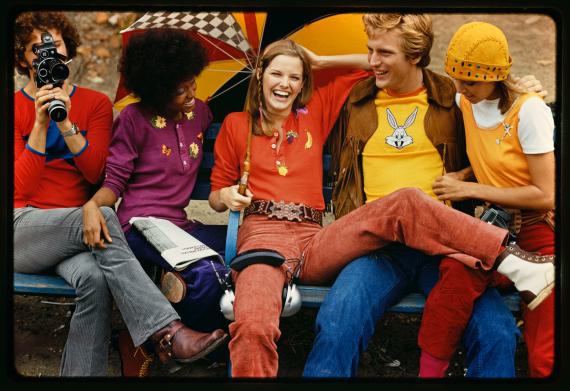
Cotton knit T-shirts by Elaine Post Ltd. And Knitquake, 1971
Color transparency
24 x 36 mm
(published in "T-Shirts Illustrated", Glamour (USA), no. 6, February 1971)
© Rico Puhlmann Archive
Rico Puhlmann
"Fashion Photography 50s – 90s"
Ausstellung: 27. Juni 2025 bis 15. Februar 2026
Eröffnung: Donnerstag, 26. Juni 2025, 19 Uhr
Eine Sonderausstellung der Kunstbibliothek – Staatliche Museen zu Berlin
Die Ausstellung "Rico Puhlmann. Fashion Photography 50s – 90s" bietet einen umfassenden Einblick in das zeichnerische und fotografische Schaffen Rico Puhlmanns, der über 40 Jahre erst als Illustrator und dann als Modefotograf für bedeutende Magazine wie "Brigit-
te", "petra", "Constanze" oder international "Vogue", "Harper’s Bazaar", "Glamour" oder "GQ" arbeitete. Die gefragtesten Fotomodels ihrer Zeit standen vor seiner Kamera: Gloria Friedrich und Gitta Schilling, Cheryl Tiegs und Jerry Hall, Cindy Crawford und Naomi Campbell. Seine Fotos erschienen auf zahlreichen Magazincovern, seine Bildstrecken auf Hochglanzpapier füllten mehrere Doppelseiten in Folge.
Puhlmann startete seine Karriere als Mode-Illustrator in seiner Geburtsstadt Berlin, in der nach dem Zweiten Weltkrieg der "Berliner Chic" einen neuen Höhepunkt erreichte. Wiederholt wurde er engagiert, die Entwürfe von Modehäusern zunächst zu zeichnen und dann immer mehr auch zu fotografieren – für Journale sowie für Firmenpublikationen. Das Bild dieser West-Berliner Mode hat er gleichermaßen geprägt wie seine Kolleg*innen F. C. Gundlach, Regi Relang oder Helmut Newton. Ihre Fotografien sind visuelle Zeugnisse einer ungeschriebenen Kleiderordnung um 1960.
Op- und Pop-Art, Raumfahrtbegeisterung, die Londoner Swinging Sixties,
die Adaption von Kleiderformen und Stoffmustern unterschiedlichster Kulturkreise veränderten die Mode in den 1960er-Jahren und zugleich das Bild von ihr. An immer fernere Orte wurden die Fotograf*innen von den Redaktionen zu Modeaufnahmen geschickt. Technische Entwicklungen wie Blitzlichttechnik, der aufkommende Farbfilm, Polaroid oder das flexiblere Kleinbild erweiterten nach und nach den fotografischen Gestaltungsspielraum.
Aufgrund der rückläufigen Konjunktur der gehobenen Berliner Modebranche und des damit einhergehenden Bedeutungsverlusts der Mode in Berlin orientierte sich Puhlmann neu und zog 1970 nach New York. Erste Fotoaufträge erhielt er an seinem neuen Wirkungsort von den Magazinen "Glamour" und "Harper’s Bazaar". Parallel dazu drehte er Modefilme für
das vom Sender Freies Berlin (SFB) produzierte "Modejournal" und zählt damit zu den Wegbereiter*innen des "American Look" in Europa.
Mitte der 1970er-Jahre war Rico Puhlmann als Modefotograf in New York etabliert. Seine Fotos erzählen von einer neuen Freiheit. Es sind nicht mehr die gestelzten Posen, der begleitende Gentleman, der kultiviert-gepflegte Großstadtraum, sondern Natürlichkeit, Bewegung, Spontaneität, Ungezwungenheit und zwischenmenschliche Nähe, die die Bildthemen
bestimmen. In den beiden Models Cheryl Tiegs und Patti Hansen fand Rico Puhlmann das perfekte Pendant, um dieses neue Lebensgefühl zu vermitteln.
Bis Anfang der 1990er-Jahre arbeitete Rico Puhlmann kontinuierlich für "Harper’s Bazaar" und trug mit seiner Arbeit zum Wandel des Frauenbildes bei, das zunehmend selbstbewusster wurde. Um 1980 erhielt er Exklusivaufträge für verschiedene Ausgaben der "Fashions of the Times", dem Mode-Supplement der "New York Times". Für das Männermagazin
"GQ" beschrieb er Anfang der 1980er-Jahre in einer feinsinnigen, einfühlsamen Bildsprache das neue Selbstverständnis des Mannes in puncto Mode, Styling und Körperpflege.
Mittlerweile wirkten immer größere Redaktionsteams am Modebild mit. Neben Rico Puhlmann waren Mode- und Accessoire-Redakteur*innen, Art Directors, Make-up-Artists und Hairdressers an der Bildgestaltung beteiligt. Noch in den 1960er-Jahren hatte Puhlmann zusammen mit den jeweiligen Redakteur*innen die Entwürfe auf den Modeschauen selbst ausgesucht, auch die Locations und die Models selbst bestimmt. Er überprüfte
Styling und Make-up, nachdem sich die Fotomodels selbst geschminkt und angekleidet hatten. Er führte Regie bei Posen und Gesten und wählte Requisiten und Accessoires aus.
Puhlmann starb 1996 bei einem Flugzeugabsturz. Eine Buchpublikation zu seinem Werk war bereits in Planung. Auch eine Rückkehr nach Berlin mit einem Lehrauftrag an der hiesigen Hochschule der Künste war in Verhandlung, eine erste Digitalkamera bereits angeschafft. Auch nach über 40 Jahren Schaffenskraft hatte Rico Puhlmann Pläne. Das Gros der Exponate stammt aus dem Werkarchiv Rico Puhlmanns, das von seinem Bruder Klaus Puhlmann und dessen Frau Anne verwaltet und für die Ausstellung großzügig zur Verfügung gestellt wird.
Die Ausstellung "Rico Puhlmann. Fashion Photography 50s – 90s" würdigt Puhlmanns Werdegang und insbesondere seine Arbeit für Modejournale. Dabei nimmt sie verschiedene Aspekte der Mode-, Fotografie-, Presse- und Kulturgeschichte in den Blick. Sein zeichnerisches und fotografisches Werk steht exemplarisch für den Modejournalismus der 1950er- bis in die 1990er-Jahre.
Die Ausstellung ist kuratiert von Dr. Britta Bommert, Leiterin der Sammlung Modebild, Kunstbibliothek – Staatliche Museen zu Berlin, und als Co-Kurator Hans-Michael Koetzle, München, in enger Zusammenarbeit mit dem Rico Puhlmann Archiv (Anne und Klaus Puhlmann), Berlin.
Zur Ausstellung erscheint im Verlag Kettler, Bönen, ein umfangreicher
Katalog:
"Rico Puhlmann: Fashion Photography 50s-90s"
hg. v. Britta Bommert in Zusammenarbeit mit Hans-Michael Koetzle
Hardcover, 256 Seiten
24 × 30 cm, de/en
ISBN 978-3-98741-192-2
39 Euro
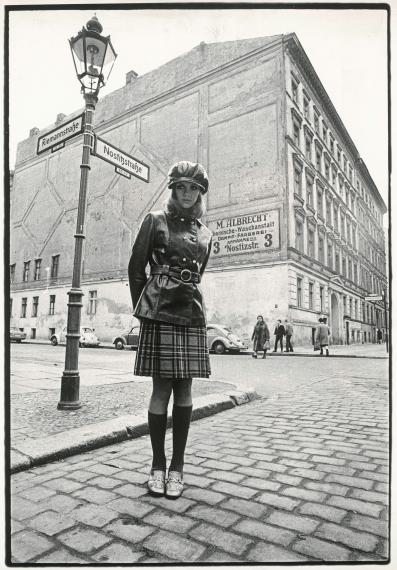
Nicole in a kilt and knee socks, with a long, tightly belted leather jacket over it by Hobbydress, Berlin-Kreuzberg, 1968
Silver gelatin paper
39,9 x 30,4 cm
(published in "Total Look", petra, Nr. 3, 1968)
© Rico Puhlmann Archive
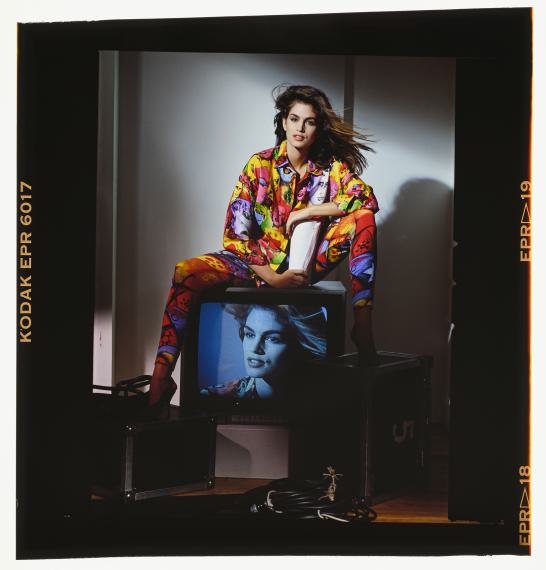
Cindy Crawford with Marilyn Monroe print silk shirt and abstract leggings by Gianni Versace, 1991
Color transparency
4,2 x 5,6 cm
(published in "Signature Style", Harper's Bazaar (USA), no. 3351, March 1991)
© Rico Puhlmann Archive
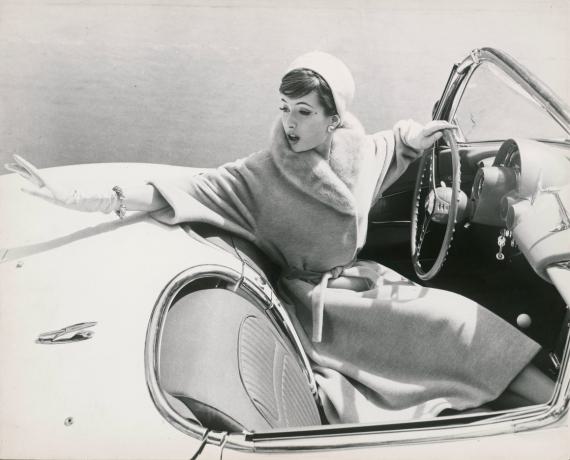
Brigitte (Gitta) Schilling in hellbeigem Kaschmirmantel mit passendem Gürtel
und hellem Nerzkragen von Gehringer & Glupp, 1959
Silbergelatinepapier
24,2 x 30 cm
(veröffentlicht in "Shopping en Allemange. Aux quatre coins du prêt-a-portér",
Vogue (FRA), août 1959)
© Rico Puhlmann Archive
